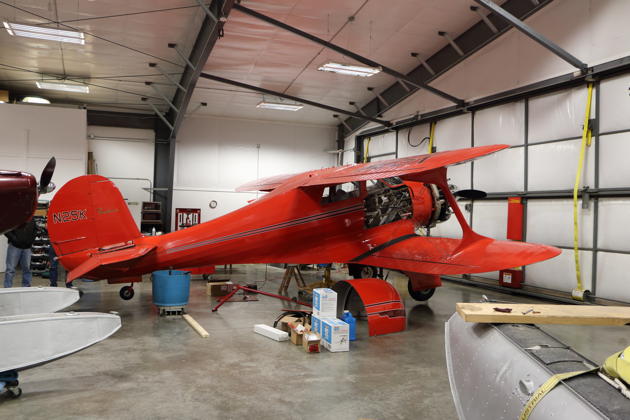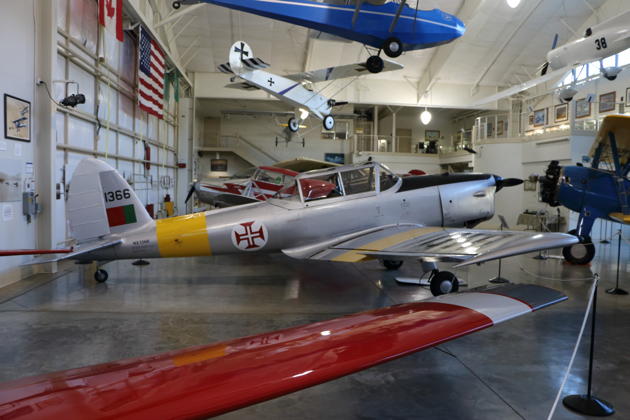FlightLog Archive
∟Aircraft Flown
Flying the Apache Geronimo - Feb 2019
George Johnson previously owned a Lake Amphibian that was parked next to our Piper Warrior in Renton. George was looking for a new aircraft with more carrying capability, and possibly a twin-engined aircraft. One day, the Lake was gone, and in its place was a Piper Apache with a sharp-looking Geronimo modification.
The Piper Apache is a classic light twin developed in the 1950s to compete with the Beech Staggerwing and Bonanza, and the Cessna 195. Piper started with a Stinson design, updating it from a tailwheel configuration, sporting an all-metal design, and upgraded the Stinson design with the then-new 150-hp O-320 engine. Standard fuel on the Piper Apache was 72 gallons, but practically all of the original buyers purchased the twin 18-gallon auxiliary tanks for a total of 108 gallons.
The Piper Apache is a true bargain with good cabin comfort, true four-passenger capacity, good reliability, reasonable speed numbers as well as one of the market's most benign single-engine flight characteristics typical of a light twin.
George invited me to fly his Apache to check out the airplane and the cockpit. After a spate of cold and unseasonably snowy weather, we had a week of clear skies in mid-February, and we planned a flight from Renton to Port Townsend to enjoy lunch and visit the Port Townsend Aero Museum. While the interior cabin of the Apache is wider (48 in) than my Warrior (42 in), entry into the Apache cockpit felt a bit more difficult than my Warrior. Once seated, the cabin width was appreciated, and George quickly started the twin IO-360s and lit up the impressive cockpit display suite. In addition to the Geronimo engine and airframe mods, George's Apache has a completely new glass panel installed, with a Garmin G600 suite, added Garmin 530/430 systems, ADS-B and an auto-pilot.
We departed north from Renton's runway 34, and the rapid acceleration on takeoff roll and excellent climb rate were the first features to grab my attention. The Apache's twin IO-360s really got us moving in a hurry, and I expected to see George continue the excellent climb rate to 3000 feet, as we cruised under the SeaTac Class Bravo airspace en route to Port Townsend. However, George leveled at 2000 feet with a smile, stating that higher altitude climbs were primarily for "those single-engine guys". We stayed low and enjoyed the view.
The Apache in cruise handled very smoothly, and roll rate seemed adequate in gentle turns, with good slow speed handling. Visibility from the cockpit was good, enabling us to find ADS-B traffic without difficulty. Letdown, pattern and landing speeds were not much higher than my Warrior.
After George and I had an enjoyable lunch at the Spruce Goose restaurant, George and I stopped by a local hangar to check on a gorgeous red Beech Staggerwing undergoing maintenance, owned by George's friend Bill Sleeper, who is also a member of my Cascade Warbirds squadron. We then toured the impressive Port Townsend Aero Museum, where I was impressed with the variety and quality of their growing aircraft collection. One bird that caught my eye was a Chipmunk in Portuguese Air Force colors, serial number 1366, donated to the museum by Bill Sleeper. I later sent a Chipmunk 1366 photo to my pilot training classmate, José Pinheiro, who recently retired as the 4-Star General Chief of Staff of the Portuguese Air Force. José noted that he flew Chipmunk 1366 twice, right after his first solo in the late 70s.
George, thanks for the Apache Geronimo introduction. I look forward to flying it again, and also checking out Bill Sleeper's Staggerwing with you!
Here's a good summary of the Geronimo conversion.
Epilog
In May 2019, George and I flew our wives, Veronica and Mary, up to Port Townsend in the Apache, treating them to Sunday brunch and backseat chauffeuring in the Apache Geronimo.
 KASPRZYK
KASPRZYK










